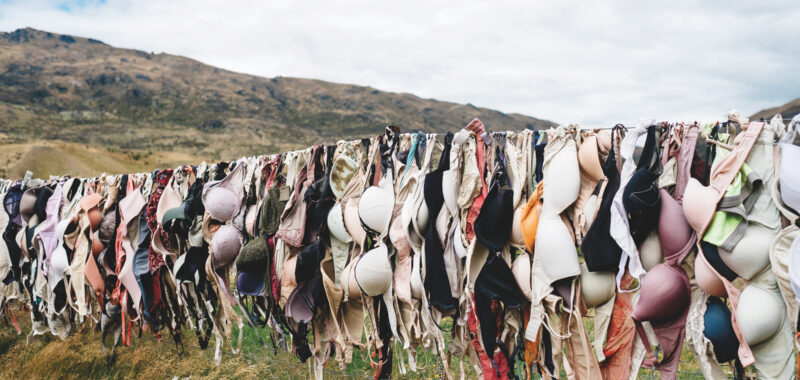Did you know that one Icelandic witchcraft ritual dating back to the 16th century involved the careful de-gloving of skin off the bottom half of human corpses for the living to wear as a pair of magical breeches called nábrók? Or that tight-laced corsets were historically blamed for tuberculosis, epilepsy, and ugly children? These tidbits of fashion history are among hundreds woven seamlessly into British writer Nina Edwards’s newest book, The Virtues of Underwear: Modesty, Flamboyance, and Filth (2024).
Published by Reaktion Books, Edwards’s 253-page text on the origins and evolution of underwear is supplemented by 89 historical illustrations and photos — 24 of which are printed in color on glossy pages — pertaining to the cultural, social, gendered, and economic import of these “unmentionables.” Drawing from fastidious research, Edwards braids innumerable insights into contextual narrative in an approachable yet non-linear manner. The result is a meandering yet engaging story that manages to maintain an entertaining grip on even the most TikTok-addled attention span.

Serving as a sweeping introduction into the world of underwear, Edwards’s text is organized into eight chapters examining the purpose and origins, social and economic connotations, material history, marketing, and maintenance of primarily Western intimate apparel — from corsets and codpieces, lingerie, swim, and athletic wear to infant nappies and menstrual hygiene garments. She underscores early in the book that “a problem for the clothing historian is that it tends to be only the least worn, most formal, sometimes least loved clothing that is preserved for the future,” which inevitably leaves gaps in undergarment history.
“The material examples we have tend to be clothing that wasn’t worn very much, and so we have very little clothing; unless it was caught in an Ice Age like Ötzi in the Alps, it just doesn’t exist,” Edwards said in an interview with the New Books in Women’s History podcast. “If it was more or less worn out by the wearer, it then might be reused as rags or for other purposes, it wouldn’t have been saved.”
Thankfully, evidence of underwear’s social and material evolution has been preserved through documentarian photography, which Edwards features heavily throughout the book. She references and includes a color photo of the pale blue, knit silk shirt worn by England’s King Charles I for his execution on January 30, 1649 — a garment he requested to keep from shivering in the cold and thus appearing scared to meet his fate — as well as a black-and-white photo of a preserved Inuit naatsit, or thong lined with seal fur, from the 19th century.
Paintings, prints, sculptures, and illustrations abound throughout the book’s pages as vital resources for understanding the long arc of humanity’s relationship with underwear — including a range of Ancient Roman mosaics, illuminations from Medieval manuscripts, Renaissance and Rococo paintings, and 21st-century billboard advertisements among a swath of etched prints and collections photos. Juxtaposing 19th-century Japanese woodblock prints with a photo of the Cardrona Bra Fence in New Zealand and more, Edwards stitches together militance and modesty, class and cleanliness, sexuality and spirituality, couture crinoline and cancer awareness campaigns, and the exchange of sheep’s wool for Spandex for ease and comfort in a rapid-fire overview of people and their intimate wear — both ever-changing.
“Amid what I’ve tried to provide — what reliable history I can — I’ve also made a number of surmises and suggestions, and a few examples from my own experiences,” Edwards told New Books in Women’s History. “I hope readers will question those examples with their own, and perhaps add to it and make it a richer picture because I do think it’s an area where an enormous amount of subjective knowledge needs to be brought in.”






